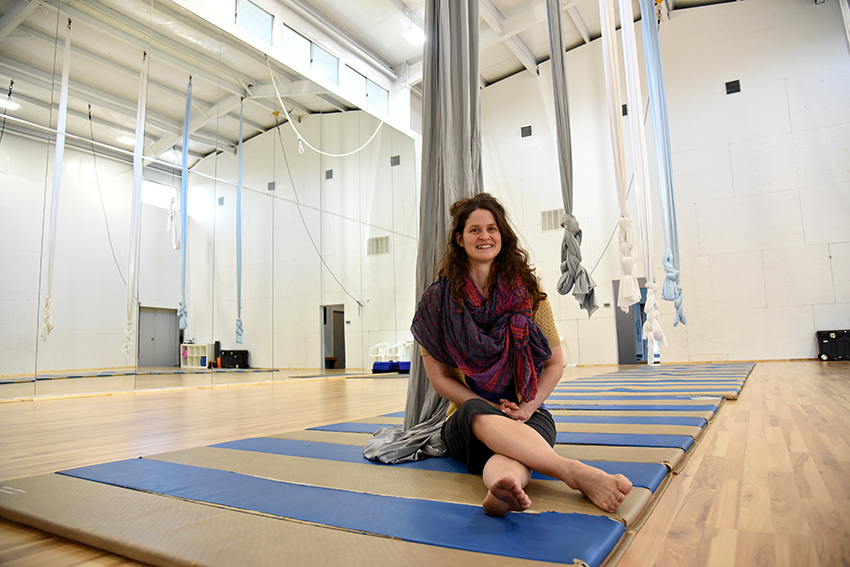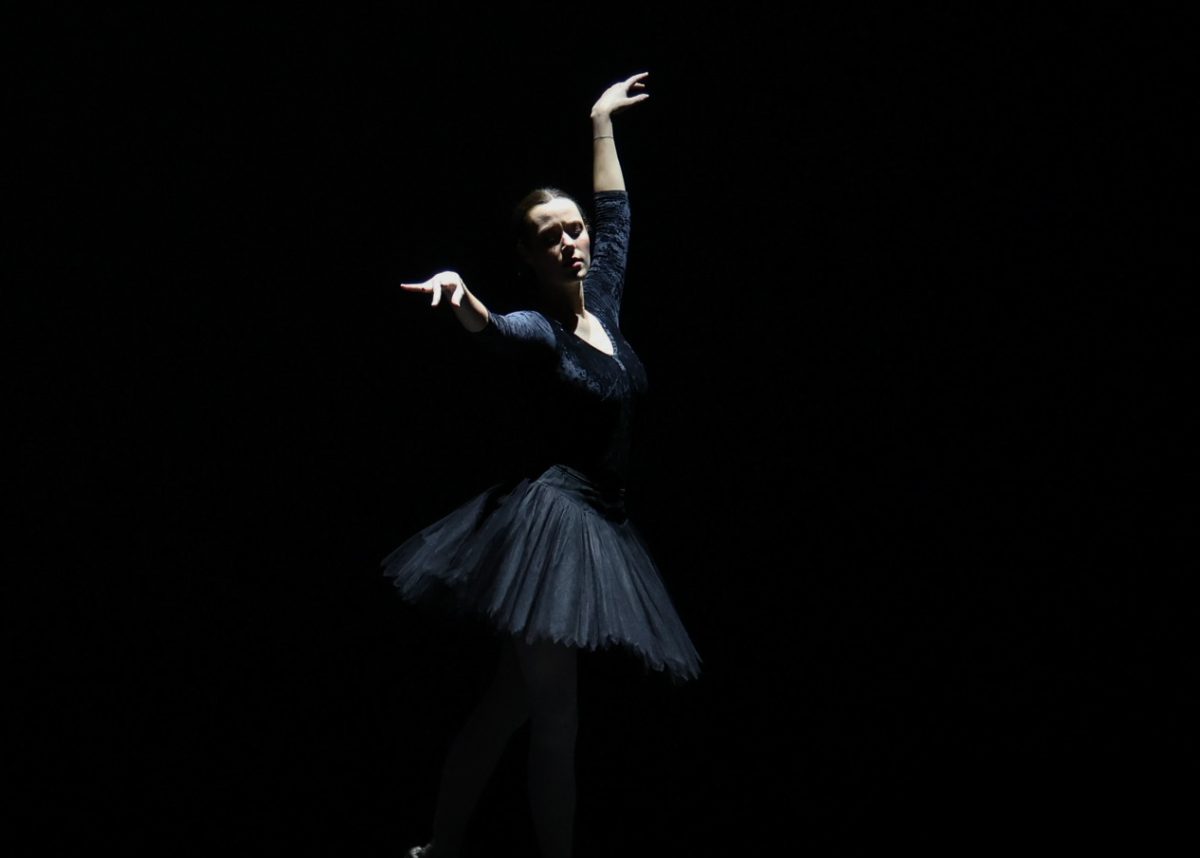Nicole Whiteside often wonders what it would be like to dance atop the buildings she sees on a daily basis.
More often than not, she has a good guess.
Whiteside, a UT alumna and aerial dancer, is the associate art director at Blue Lapis Light aerial dance company. Blue Lapis Light specializes in producing site-specific performances, filling the caverns of unfinished buildings or outdoor structures with dancers who twirl at the ends of cloth and wire.
“The environment really informs what we do and the story we can tell,” Whiteside said. “In [classical] dance, it’s often performed in theater. It’s a very controlled space. When you take that and put it outside, what you’re seeing is so broad. It’s on the side of the building — anybody walking by could see it — so we’re interacting with our home, with our environment, with traffic, with lights and so on.”
Blue Lapis Light was founded in 2005 by renowned dancer Sally Jacques, a longtime activist whose works are often informed by environmental or political issues. Jacques began experimenting with the idea of aerial dances when she produced an aerial show in the shell of the ill-fated Intel building in downtown Austin.
Construction for the building halted in 2001, and the unfinished structure stood as an ominous reminder of the economic downturn of the early 2000s until Jacques and her assembled crew of dancers and choreographers transformed the shell into a work of art. Jacques founded Blue Lapis Light soon after.
“I’m not a happy person in a confined space,” Jacques said. “I like big spaces, and I love, love architecture. I want to wake up buildings and create unexpected, beautiful images flying on a building.”
The performers at Blue Lapis Light are currently in the midst of planning a show at the Long Center for the Performing Arts slated to debut in June. Their efforts have been buoyed by a newly renovated studio that sits on the same property as Whiteside’s South Austin home. At the studio, Blue Lapis dancers teach aerial classes to students of all ages six days a week.
Anika Jones, a dancer who joined the company in 2012, originally trained in more classical forms of dance, such as ballet, before discovering aerial dance.
“You’re able to find different ways to move, which is really exciting,” Jones said. “Working with Blue Lapis and getting the opportunity to explore the challenges of being on the side of a building was really awesome and exciting and a little bit scary at first.”
In the past, Blue Lapis Light dancers have performed at the Long Center, the Bob Bullock Texas State History Museum and the historic Seaholm Power Plant. According to Whiteside, choreographing the shows often involves a combination of trial and error, as the team must adapt to the singular architecture of each performance site.
Whiteside said she aims to use choreography to bridge the gap, both physical and emotional, between the dancers in the air and the audience on the ground.
“The aerial work is secondary to connecting — to looking out and seeing the audience or looking out and seeing your performers,” Whiteside said. “We’ve done work where we don’t pay attention to each other, and it’s not deep. You are in, for lack of a better term, a survival situation. You have to stay connected.”





















